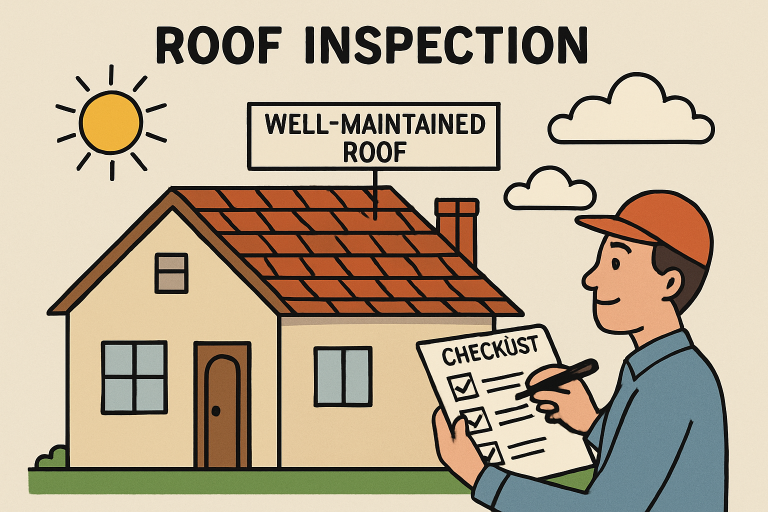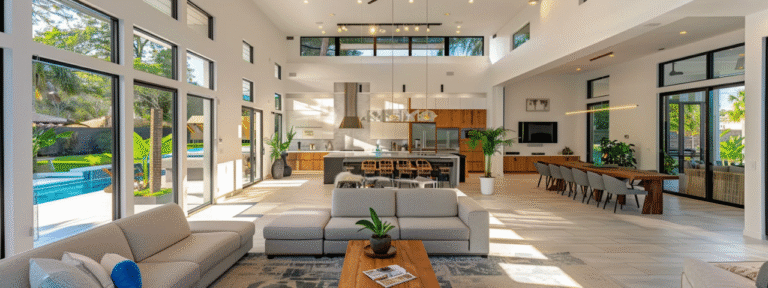Key Takeaways
- Regular roof inspections can identify minor issues before they become major problems.
- Proactive maintenance increases a roof’s lifespan and saves money long-term.
- Proper care helps maintain indoor comfort and energy efficiency.
- Weather, age, and material all impact a roof’s maintenance needs.
- Expert guidance and roof maintenance tips can empower property owners to make informed decisions.
Why Proactive Roof Maintenance Matters
Roof problems often strike unexpectedly with leaks or shingle loss, but many can be prevented by early maintenance and effective roof repair solutions. Addressing small issues early, such as patching minor leaks or replacing damaged shingles, protects your home and avoids costly repairs. Regular inspections and expert repairs—like sealing vulnerabilities and replacing worn-out materials—are key to safeguarding your property and extending roof life. Industry data shows nearly 80% of residential roofs are replaced prematurely due to neglect. Preventive care, including timely roof repairs, reduces expenses, prevents surprises during storms, and improves indoor comfort, energy efficiency, and property value.
Common Roofing Problems Prevented by Maintenance
- Leaks and Water Damage: Tiny cracks, deteriorated flashing, or failed sealants are leading causes of roof leaks. Regular inspections can uncover early warning signs before they escalate into significant water damage or mold infestations.
- Growth of Moss and Algae: Roofs shaded by overhanging trees or exposed to consistent moisture can develop invasive plant growth. Moss accelerates shingle decay and reduces your roof’s long-term performance.
- Blocked Gutters: Debris accumulation in gutters prevents proper water drainage, causing overflow, fascia damage, and even foundation problems. Keeping gutters clean is one of the simplest and most effective forms of preventive care.
- Loose or Missing Shingles: Wind, storms, or simply the effects of old age can dislodge shingles, exposing the underlying materials to damage. Timely repairs prevent minor issues from escalating into expensive repairs or a total roof replacement.
Ideal Inspection Schedules & Checklists
Consistent roof maintenance starts with a reliable inspection schedule, recommended at least twice annually—in spring and fall—and after major weather events like storms or hail.
- Examine shingles for curling, cracks, granule loss, or missing pieces.
- Check for moss, mold, or algae growth—especially on the north or shaded sides of the roof.
- Inspect flashing and sealants around chimneys, skylights, and vents to ensure watertight barriers.
- Clear gutters, downspouts, and roof drains of leaves, sticks, and debris.
- Inspect attic spaces for signs of water stains, wood rot, or pest activity.
How Climate and Weather Shape Roof Care
Roofing material and local climate are key factors in determining maintenance needs. For example, homes in snowy regions require frequent checks for ice dams, while properties near the coast face risks from salty air and high winds. Regular attention to your roof after storms or extreme temperature changes reduces the likelihood of incurring expensive weather-related failures. According to This Old House’s roof inspection checklist, tailoring your maintenance routine to your region’s unique challenges is one of the best ways to keep your roof strong year-round.
Comparing Costs: Regular Maintenance vs. Repairs
Skipping maintenance might seem like a way to save money, but it often ends up costing more. Routine maintenance for the average home may range from $200 to $600 each year, but it acts as affordable insurance against sudden, large expenses. In contrast, a major repair—such as addressing a failed roof valley or widespread leak—can easily top $1,000. Homeowners who prioritize regular maintenance may save between 30% and 50% over the lifespan of their roof compared to those who only respond to damage.
Extending Roof Lifespan Through Care
Every roof has an expected service life, but its true lifespan depends on the attention it receives. For instance, an architectural shingle roof rated for 30 years may only last 15 to 20 years if neglected. Proactive maintenance, such as sealing exposed fasteners and keeping debris at bay, can add 10–15 years to your roof’s service life. This translates to fewer replacements, greater environmental sustainability, and significant cost savings over time.
Pro Tips for DIY Roof Maintenance
- Use a sturdy extension ladder, always placed on level ground, and work with a partner for safety.
- Wear soft-soled, non-slip shoes to move carefully and avoid shingle damage.
- Trim branches back at least six feet from the roof to minimize moss growth and leaf buildup.
- If you notice loose flashings, widespread leaks, or soft spots underfoot, consult a roofing professional for a thorough assessment.
Knowing When to Call a Professional
Some tasks, like cleaning gutters or checking for moss, are perfect for a capable DIYer. However, more significant concerns—such as sagging decking, structural rot, or persistent leaks—require immediate attention from a licensed contractor. Attempting complex repairs yourself may void manufacturer warranties or expose you to unnecessary risk. Protect your investment by calling in professionals when the scope of work exceeds routine upkeep.
Conclusion
Proactive roof maintenance is not just a recommendation; it’s a strategic investment that yields significant long-term savings. By regularly inspecting and addressing minor issues like cracked shingles, clogged gutters, or damaged flashing, homeowners and building managers can prevent the escalation of problems that lead to major, costly repairs. Ultimately, a proactive approach to roof care extends the roof’s life, preserves the structural integrity of the entire building, and provides peace of mind, proving that a little prevention today is far more valuable than an expensive cure tomorrow.






